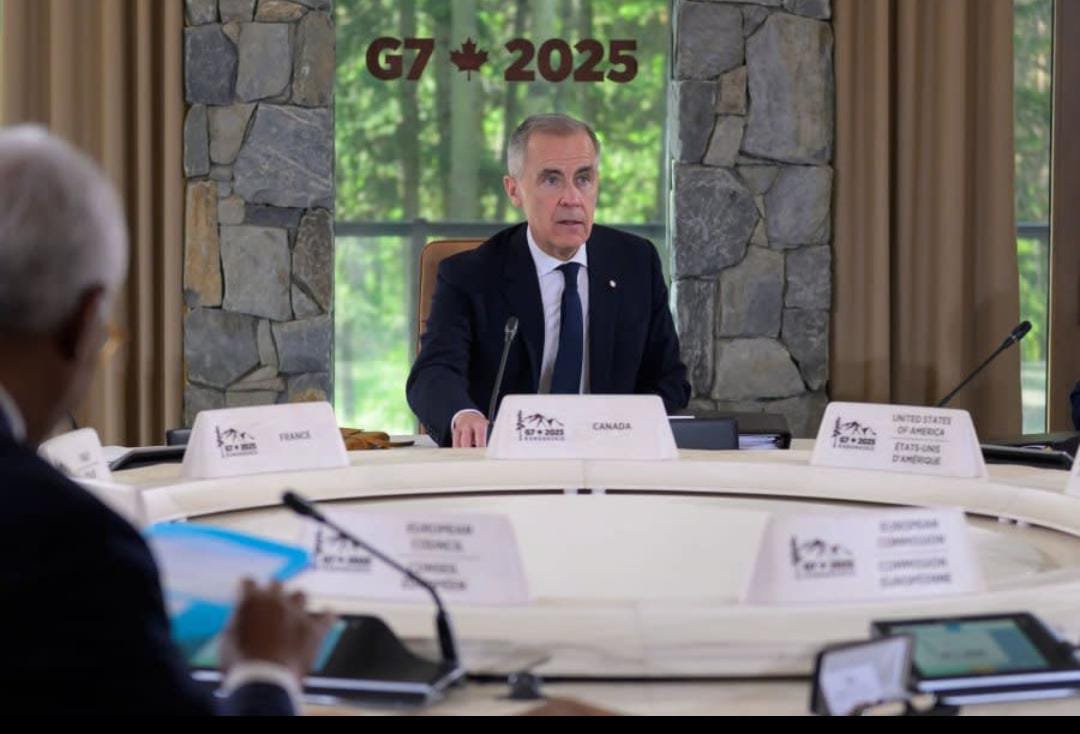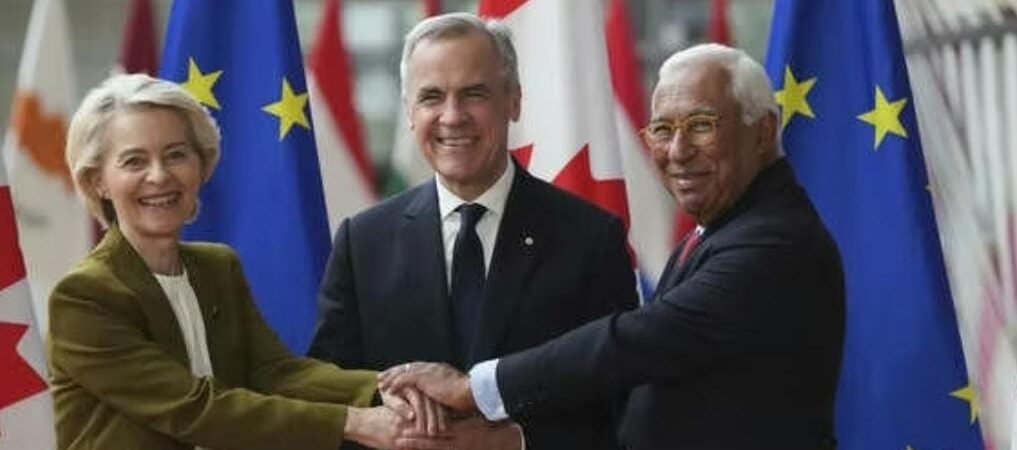With increasing concern over U.S. unpredictability, Canada and the European Union form a strategic defence alliance aimed at strengthening transatlantic security and countering global threats, drawing strong responses from allies and critics alike.
In a historic development reshaping the global security landscape, Canada and the European Union have formalized a groundbreaking security and defence cooperation agreement. Signed in Brussels, the pact signifies the first-ever comprehensive defence alliance between the EU and a non-European Western nation. It not only broadens military collaboration and defence procurement but also highlights a subtle yet clear divergence from longstanding reliance on U.S. leadership in NATO and global security affairs. The move comes amid growing unease over U.S. foreign policy under President Trump, who has repeatedly questioned NATO’s principles and strained ties with traditional allies.
A First-of-Its-Kind Transatlantic Security Pact
The agreement, referred to as the Canada-EU Strategic Security and Defence Partnership, marks a historic milestone in transatlantic relations. It allows Canada access to the EU’s €150 billion “SAFE” defence procurement fund and paves the way for joint military planning, cyber-defence initiatives, maritime security operations, and technological research. Both Canadian and EU officials emphasized the pact’s significance in strengthening democratic values and upholding the rules-based international order.
European Commission President Ursula von der Leyen described the agreement as a “bold step toward deeper strategic autonomy,” while Canadian Prime Minister Mark Carney declared that “Canada is not the 51st U.S. state,” signaling a decisive shift in diplomatic tone.

Motivations Behind the Agreement
The Canada-EU pact did not emerge in a vacuum. It follows months of diplomatic tension between Ottawa and Washington. President Trump’s revival of protectionist trade rhetoric and his threats of imposing heavy tariffs on Canadian aluminum and steel rekindled economic anxieties. Additionally, Trump’s repeated questioning of NATO’s mutual defence clause (Article 5) has rattled allies, particularly those in Eastern Europe and the Baltics.
Canada, historically among the most pro-American nations, began to re-evaluate its foreign policy outlook. With threats of unpredictable U.S. disengagement from NATO and other multilateral commitments, Canadian leaders pursued deeper ties with like-minded democratic partners in Europe. The new pact with the EU reflects this reorientation.
Military and Technological Cooperation
The agreement extends beyond symbolic diplomacy. It grants Canadian defence firms access to the EU’s joint defence funding, allowing them to co-develop military technology and participate in major projects. For example, Canadian aerospace companies may now contribute to EU-funded drone surveillance programs and next-generation radar systems. Maritime cooperation in the Arctic and the North Atlantic is also a focus, enhancing security around critical shipping lanes and undersea infrastructure.
In space and cybersecurity, the two sides committed to sharing data and defending against cyber threats posed by state and non-state actors. Canada’s existing expertise in satellite technology complements the EU’s Galileo and Copernicus programs, enabling mutual gains in surveillance, communications, and climate monitoring.
A Response to Growing Global Instability
Both Canada and the EU have cited rising geopolitical tensions as a primary driver of the pact. With Russia’s continued aggression in Ukraine, escalating tensions in the South China Sea, and increased cyberattacks targeting Western infrastructure, leaders on both sides of the Atlantic see the agreement as a necessary evolution of defence policy. The pact includes specific commitments to support Ukraine through military aid, logistics coordination, and joint training.
Furthermore, the agreement aims to counter disinformation campaigns and hybrid threats, particularly during elections and international crises. Canadian intelligence agencies and EU cyber units will collaborate on early warning systems and response protocols to strengthen democratic resilience.

Trump’s Reaction and Domestic Backlash
President Trump criticized the Canada-EU pact as “disloyal” and “undermining NATO,” accusing Prime Minister Carney of exploiting Europe’s defence programs at the expense of the U.S. Trump’s comments drew sharp rebukes from several American lawmakers, including members of both the Republican and Democratic parties, who warned that alienating key allies like Canada could weaken the broader transatlantic alliance.
Domestically in Canada, the agreement has received widespread support across party lines, with opposition leaders praising the government’s proactive foreign policy and commitment to long-term security. Defence analysts argue that Canada is finally taking a leadership role in global affairs, no longer passively relying on the U.S. for security guarantees.
While the EU Commission has fully endorsed the pact, several member states are cautiously optimistic. Countries like France and Germany see Canada’s involvement as a strategic asset, given its advanced military capabilities and Atlantic position. However, others have raised questions about the legal framework for Canadian participation in EU-exclusive defence projects.
The full implementation of the agreement hinges on ratification by at least ten EU national parliaments. Nevertheless, early signals suggest strong support, especially given the urgent need to reduce dependence on U.S. defence contracts amid growing concerns over Washington’s political volatility.
Strategic Autonomy and NATO Compatibility
A central question raised by the pact is its compatibility with NATO. Both Canada and the EU have stressed that the agreement is not an alternative to NATO but a complement. However, the concept of “strategic autonomy” — Europe’s capacity to act independently of the U.S. — remains controversial. Critics fear that parallel structures could weaken NATO cohesion, while proponents argue that diversified defence relationships enhance overall security.
Canada’s move aligns with similar efforts by European countries to bolster independent capabilities. For example, France has advocated for a European Defence Union, and Germany has increased investments in joint EU military projects. The Canada-EU pact may set a precedent for future partnerships with other like-minded countries such as Japan, Australia, and South Korea.
Conclusion: A Defining Moment in Global Security
The Canada-EU defence pact signals a new era in global diplomacy — one where allies are adapting to shifting power dynamics and asserting independence in pursuit of shared values. As Trump continues to challenge the norms of Western alliances, Canada and the EU are laying the groundwork for a resilient and cooperative security framework. Their message is clear: while history has long been shaped by transatlantic unity led by Washington, the future may belong to a broader coalition of democratic powers working in concert.
With implementation now underway, the coming months will reveal how this ambitious partnership shapes the balance of power in an increasingly uncertain world. Whether it reinforces or redefines the foundations of the Western alliance remains to be seen — but its potential is undeniable.
